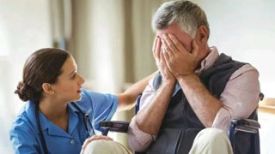
Lower back pain is becoming increasingly common among people of all ages, especially those who adopt a sedentary lifestyle or work at a desk. The essence of modern life makes us sit for long periods of time, which may lead to the occurrence and persistence of this discomfort. However, you can alleviate this pain through simple home exercises and stretching exercises.
I. Understand lower back pain
Lower back pain is usually caused by our lifestyle habits. Long periods of sitting, poor posture, and lack of physical activity often lead to stiffness in the back and hips. This stiffness can lead to overcompensation in the lower back, resulting in pain and discomfort.
Other causes of lower back pain may be related to more severe health conditions, such as disc herniation, arthritis, osteoporosis, disc rupture, and muscle and ligament strains. However, these situations are not very common and require diagnosis by medical professionals.
II Joint by joint theory
Before delving deeper into exercises and stretching, let's first understand their logic. This is based on the joint by joint theory. This simple but crucial theory suggests that our body has a pattern of alternating stable and active joints. For example, the knee (stable) is located between the ankle and hip (both moving).
Our lower back or lumbar spine is a stable joint sandwiched between two active joints - the thoracic spine (upper back) and the hip joint. In an ideal situation, each joint can perform its function perfectly. But active joints, such as the hips and upper back, often become stiff and lose their mobility due to our lifestyle habits.
When this happens, the lower back compensates by becoming more flexible, leading to discomfort, pain, and even injury as it is doing unsuitable work.
The exercises and stretching exercises we recommend aim to restore the natural mobility of the buttocks and upper back, improve the stability of the lower back, reduce additional pressure on the lower back, and help control pain.
3、 Stretching exercises can immediately relieve lower back pain
If you experience lower back pain, you can do some stretching exercises in the comfort of your home. These stretching exercises aim to relieve tense muscles and improve flexibility, thereby helping to alleviate discomfort.
Please remember that if you suffer from severe or chronic back pain, it is best to consult a healthcare provider before starting any new exercise routine.
Child posture
First kneel on the floor. Touch your big toes together and sit on your heels.
Separate your knees and make them as wide as your hips.
Exhale and place the torso between the thighs.
Stretch your hands forward to elongate your spine.
Cat Camel Stretching
Starting from being on all fours, place your hands directly under your shoulders and your knees under your hips.
When exhaling, bend your spine towards the ceiling and keep your knees and elbows straight.
When inhaling, arch your back and place your abdomen against the floor, then lift your head and look straight ahead.
Kneeling hip flexion muscle stretch
First kneel on the floor. Step forward with one foot so that you are in the lunge position.
Keep your torso upright and place your hands on your hips.
Push your hips forward until you feel the hip flexors of your hind legs being stretched.
Maintain this stretch for at least 30 seconds, then switch sides.
Knee to chest stretch
Lie flat and stretch your legs in front of you.
Bend one knee and hold it in front of your chest.
Grasp the back of the thigh or knee and pull it closer to the chest.
Take a deep breath and hold for 30 seconds, then switch to the other side.
Pear shaped muscle stretching
Lie on your back and bend your knees.
Cross one ankle over the other knee.
Grasp the uncrossed legs with both hands and pull them towards the chest until you feel a stretch in your hips.
Hold for 30 seconds, then repeat on the other side.
4、 Combining flexibility and stability
Practice to relieve lower back pain
In order to maintain a healthy and pain free lower back in the long term, we not only need to pay attention to the lower back, but also to the joints above and below it. Here, we will investigate flexibility exercises aimed at enhancing hip and upper back flexibility while strengthening core strength.
Hip joint internal rotation range of motion
The flexibility of the hip joint, especially internal rotation, plays a crucial role in maintaining back health. For people who sit for a long time, the internal rotation of the hip is usually restricted.
By combining exercises targeting hip internal rotation, we can address this imbalance, improve overall hip flexibility, and alleviate some pressure on the lower back.
To perform this hip exercise:
Lying supine with knees bent at approximately 90 degrees.
Lower one knee inward to increase the internal rotation of the buttocks.
Gently apply pressure with the other leg to increase stretch.
Internal rotation exercise of hip joint
Lie on your side, bend your lower knees, and place a pillow or foam shaft between your knees.
When you slowly rotate the upper hip to lift your feet to the ceiling, keep the pillow or foam shaft stable.
Lower your feet and repeat 10-15 times, then switch sides.
Thoracic range of motion
The focus of this exercise is to increase the mobility of the thoracic spine (upper back). Improving the mobility of the upper back can ensure that movement is more evenly distributed throughout the spine, thereby helping to reduce pressure on the lower back.
Place the foam shaft under the upper back.
Lift your hips off the floor and place your hands behind your head to support your neck.
Roll up and down on the upper back.
Pause in any tense area and add a slight back bend to further promote upper back mobility.
Continue this action for 1-2 minutes.
Dead worm style
Dead Bug is a core stability exercise aimed at strengthening the muscles that support the spine.
This is a stability exercise for the core and lumbar spine.
Lie on your back, tighten your core muscles, press your lower back against the floor, and alternate between moving your arms and legs, always keeping your core muscles engaged.
Repeat this action 10-15 times.
Bird dog style
Bird dog style is another excellent core stability exercise that can enhance abdominal and back muscles. Strengthening these muscles can improve the overall support structure of the spine, thereby reducing pressure on the lower back.
Start from the position where your hands and knees are on the table. Ensure that the knees are located below the hips and the wrists are located below the shoulders.
Maintain core strength and spinal neutrality, stretch your right arm forward and your left leg backward until they are in line with your body.
Maintain this position for a few seconds, then slowly return to the starting position.
Repeat the exercise with your left arm and right leg. This completes a representation.
The goal is to repeat 10-15 times in total.
5、 Techniques for further prevention of lower back pain
To further control back pain, you can incorporate the following techniques into your daily life:
Monitor your sitting posture: Ensure that your desk layout is conducive to maintaining good sitting posture. For example, your computer screen should be level with your eyes, your feet should be flat on the floor, and a chair should support your back. Over time, these small changes can help alleviate pressure on the lower back.
Regular rest: Sitting for a long time can cause stiffness and discomfort in the lower back. Therefore, try standing, stretching, or walking briefly every hour. This helps maintain muscle flexibility and joint mobility.
Self massage: You can use foam shaft, massage ball and other tools for self massage. This helps relieve muscle tension, improve flexibility, and reduce discomfort in the lower back.
The correct posture when lifting heavy objects: When lifting heavy objects, remember to use the hips instead of the lower back as the hinge. This helps protect your lower back from unnecessary strains and potential injuries.
Combining strength training and stretching exercises: Regular exercise can improve your posture by strengthening the muscles that support your spine.
Maintain a healthy weight: Overweight can put extra pressure on your lower back, causing pain. Maintain a healthy weight through a balanced diet and regular exercise.
Adequate sleep: Lack of sleep or insufficient sleep can exacerbate pain. Ensure that you have sufficient sleep and that the mattress and pillows provide good support.
Avoid wearing high heels: Wearing high heels can put more pressure on the waist. Most of the time, choose shoes with good arch support.
Quit smoking: Smoking can cause intervertebral disc degeneration and chronic pain.
Consider using TENS device: TENS device uses low voltage current to help relieve pain. This is a non-invasive method for treating lower back pain that can benefit certain individuals.
Kind Reminder
Suffering from lower back pain may be difficult, but through some simple exercises, stretching exercises, and lifestyle adjustments, this discomfort can be controlled or even alleviated. Whether incorporating these exercises into your daily routine or using stretching exercises to immediately relieve stress, remember to listen to the sound of your body. If any movement causes severe or intense pain, please stop immediately.
These strategies aim to help address general lower back discomfort typically caused by a sedentary lifestyle, but they cannot replace professional medical advice. If you have severe or persistent back pain, please consult a healthcare professional.


